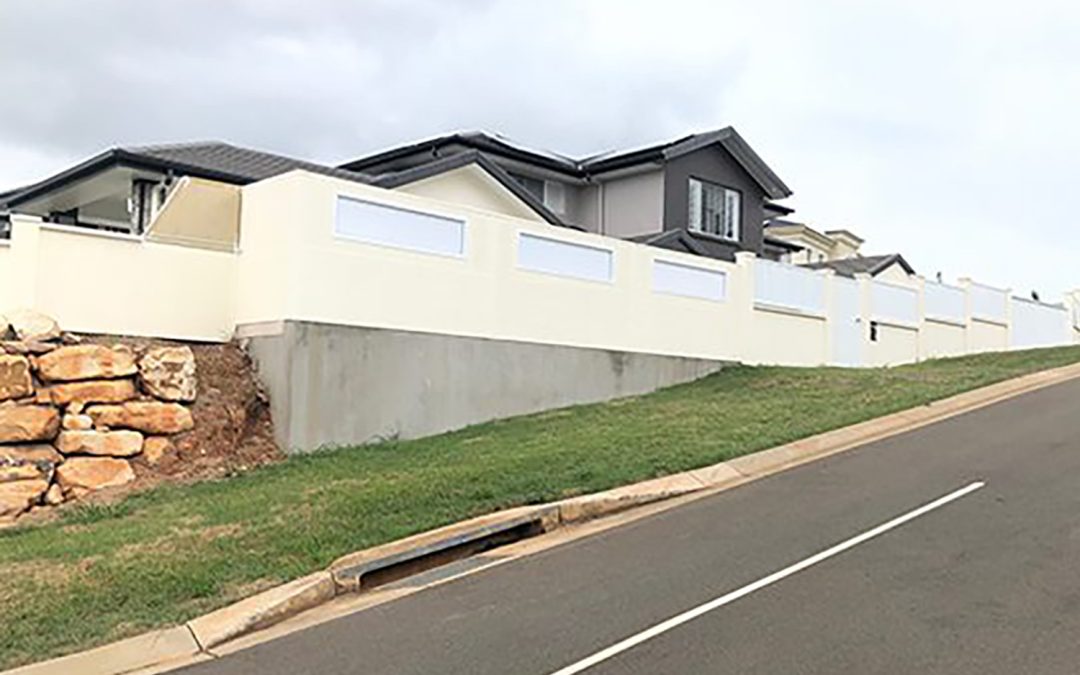Steel vs Aluminium: The Aussie Showdown in Fire-Rated Fencing
Featuring FlameTek™ & FlameWave™ by Poly-Tek
In the land of red dust, salt spray, scorching summers and bushfire season, your fence is more than just a boundary—it’s your first line of defence. When you’re living in a fire-prone area, the decision about what materials to use for fencing becomes less about looks and more about survival, safety, and strength.
Two contenders often go head-to-head in the battle for bushfire-ready boundaries: steel vs aluminium. While both claim fire resistance and durability, not all metal fences are created equal—especially when the heat is on.
Let’s dive into a no-nonsense, Aussie-style comparison between steel and aluminium fire-rated fencing, and explore how Poly-Tek’s FlameTek™ and FlameWave™ fencing systems stack up as the real deal in bushfire resilience.
Why Material Choice Matters in Fire Zones
When a bushfire rips through a region, embers can travel kilometres ahead of the flame front. Your fence, often the outermost structure on your block, can either:
-
Shield your home from radiant heat and ember attack
-
Act as a wick, igniting and carrying fire directly to your doorstep
So, the question isn’t just “will it burn?”—it’s “will it hold up under pressure, perform in extreme heat, and last the distance?”
🥊 Steel vs Aluminium: Head-to-Head
| Feature | Steel | Aluminium |
|---|---|---|
| Fire Resistance | ✅ Excellent – won’t melt or weaken under bushfire temps | ⚠️ Lower melting point (~660°C) – may deform or fail |
| Strength | ✅ High structural strength – ideal for impact and wind resistance | ⚠️ Softer and more prone to denting or warping |
| Durability | ✅ Superior tensile strength and structural integrity | ✅ Good corrosion resistance in coastal areas |
| Weight | ⚠️ Heavier – but adds to sturdiness | ✅ Lightweight – easier to handle but may rattle in wind |
| Cost | ✅ Cost-effective for fire-rated strength | ⚠️ Often more expensive with lower fire rating |
| BAL Rating Capability | ✅ Up to BAL-40 certified (FlameTek™) | ⚠️ Often fails to meet BAL-29 or higher without reinforcement |
| Maintenance | ✅ Minimal with coated finishes | ✅ Minimal, but coatings can fade faster under UV |
🔥 Fire Performance: The Deal Breaker
Let’s talk heat.
In a bushfire, temperatures can exceed 1000°C. Steel, with a melting point above 1300°C, stands firm. Aluminium? It begins to weaken and lose integrity at around 300°C—and melts at about 660°C.
That’s why Australian bushfire building codes (AS 3959) often recommend or require non-combustible, high-melting-point materials like steel in BAL-29 and above zones.
Verdict:
✅ Steel is the clear winner for high-risk bushfire zones
Introducing the Steel Champions: FlameTek™ and FlameWave™ by Poly-Tek
Poly-Tek’s fencing systems are made with fire-tested, corrosion-resistant steel, designed and manufactured right here in Australia to suit our unique conditions.
🛡️ FlameTek™: The Heavyweight for BAL-40 Zones
FlameTek™ is a BAL-40 certified fire-rated fencing system made with:
-
A non-combustible core
-
Pre-finished steel outer skins
-
Seamless, solid panels that block embers, heat, and smoke
-
Wind-rated and acoustically rated
FlameTek™ isn’t just a fence—it’s a fortress.
Perfect for:
-
Rural properties
-
Bushland developments
-
Residential boundaries in high-risk zones
💎 FlameWave™: The Stylish Steel Contender
FlameWave™ gives you fire performance and design appeal. With its architectural ripple or profile finish, it’s perfect for:
-
Feature walls
-
Estate entries
-
Coastal or suburban fire zones (BAL-29+)
Made from non-combustible steel, it’s a striking alternative to clunky brickwork or flimsy timber—offering true form and function.
Common Myths: Aluminium vs Steel
❌ “Aluminium is fireproof, it’s metal!”
Not quite. Aluminium melts far more easily than steel, and in bushfire conditions, that matters.
❌ “Aluminium’s better for coastal areas.”
While aluminium resists corrosion, so does steel when it’s properly coated—like Poly-Tek’s pre-finished panels designed for UV, salt, and weather resistance.
❌ “Steel’s too heavy for fencing.”
Poly-Tek’s systems are engineered for ease of installation, with smart panel designs that are strong without being bulky.
Real Aussie Use Case: Steel Standing Strong
In the Yarra Ranges, a homeowner upgraded their timber fence after their neighbour’s aluminium slat fence warped and collapsed during a close-call fire event. They installed FlameTek™ along their entire boundary.
Six months later, a spot fire threatened the rear of the property. The result?
“Our fence held. It didn’t even flinch. Meanwhile, the street’s lined with melted aluminium panels and blackened paling. We’ll never use anything else again.”
– Steve, VIC
Final Word: Choose Steel, Stay Safe
In the Aussie fire fencing showdown, steel takes the title—hands down.
When you choose FlameTek™ or FlameWave™, you’re getting:
-
✅ Certified bushfire protection (up to BAL-40)
-
✅ Structural strength that won’t fail under pressure
-
✅ Resistance to rust, pests, heat, and UV
-
✅ Timeless design that looks as good as it performs
Aluminium might be light—but in the face of fire, steel is lightning-strong.
Ready to upgrade to steel fencing that stands its ground when the heat is on?
Explore FlameTek™ and FlameWave™ at polytek.com.au or reach out to the Poly-Tek team for expert help on your next bushfire-safe boundary.


Recent Comments